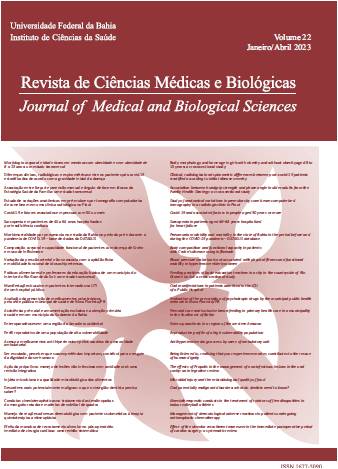Acesso a medicamentos anti-hipertensivos pelos usuários de uma unidade ambulatórial
DOI :
https://doi.org/10.9771/cmbio.v22i1.47415Mots-clés :
Hipertensão arterial, Acesso a Medicamentos Essenciais, Unidade Básica de Saúde, Adesão à MedicaçãoRésumé
Objetivo: caracterizar o acesso aos medicamentos anti-hipertensivos pelas pessoas com hipertensão arterial atendidas em uma unidade ambulatorial. Metodologia: estudo descritivo, quantitativo, desenvolvido com 103 pessoas com hipertensão arterial em uso de anti-hipertensivos. Os dados foram coletados por meio de questionário com perguntas sociodemográficas, sobre tratamento e acesso aos medicamentos anti-hipertensivos. Utilizou-se a estatística descritiva e teste qui-quadrado de Pearson ou exato de Fisher para análise dos dados. Resultados: Predominou a faixa etária de 50-69 (68,9%), sexo feminino (85,4%) e raça/cor autodeclarada preta (46,6%). Quanto ao acesso aos anti-hipertensivos, 70,9% relataram ter acesso gratuito, 60,2% os obtêm nas unidades de saúde, 65,7% não referiram dificuldades na aquisição e 86,4% que tinham acesso total. Todos os participantes que tinham dificuldade econômica também tinham dificuldade de acesso aos anti-hipertensivos. Verificou-se associação significativa entre a dificuldade de acesso aos anti-hipertensivos com forma de acesso (total ou parcial), quantidade de drogas e disponibilidade do medicamento nas farmácias (p<0,005). Conclusão: observou-se que, embora a maioria dos participantes do estudo não encontre dificuldades para obtenção dos anti-hipertensivos nas farmácias das unidades básicas de saúde, ainda assim, existe uma parcela da população sem acesso total aos anti-hipertensivos de forma gratuita, sendo essencial melhorias dos programas de fornecimento de medicamentos.
Téléchargements
Téléchargements
Publiée
Comment citer
Numéro
Rubrique
Licence
(c) Tous droits réservés Revista de Ciências Médicas e Biológicas 2023

Ce travail est disponible sous la licence Creative Commons Attribution 4.0 International .
A Revista de Ciências Médicas e Biológicas reserva-se todos os direitos autorais dos trabalhos publicados, inclusive de tradução, permitindo, entretanto, a sua posterior reprodução como transcrição, com a devida citação de fonte. O periódico tem acesso livre e gratuito.






